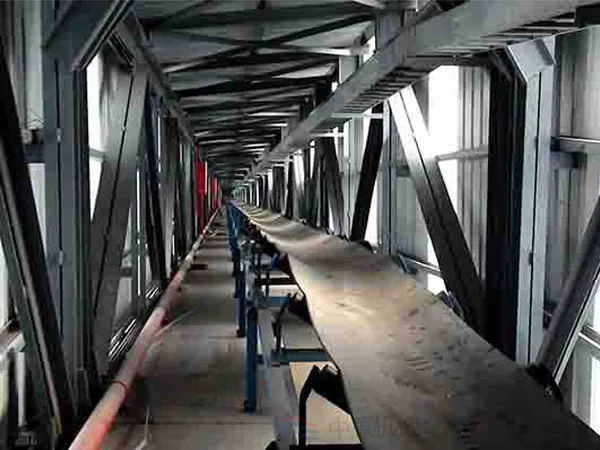Belt conveyor deflection, also known as mistracking or misalignment, is a common issue that can lead to increased wear on components, material spillage, and costly downtime. Adjusting it effectively requires understanding the causes and applying the appropriate solutions.
Common Causes of Belt Conveyor Deflection

Improper Installation:
Misaligned support structures, pulleys (head, tail, drive, snub), and idlers.
Non-perpendicularity of roller axes to the belt’s centerline.
Skewed conveyor frame.
Incorrect belt splicing (not straight or uneven tension).
Operational Issues:
Uneven or off-center material loading.
Material build-up on pulleys, idlers, or the belt itself.
Insufficient or uneven belt tension.
Seized, worn, or damaged rollers/idlers.
Worn or damaged belt (e.g., uneven wear, aging deformation, edge damage).
Foreign objects stuck in the system.
Environmental factors (e.g., wind).
Vibration during operation.
General Principles for Adjusting Deflection
Start with a clean conveyor: Remove any material buildup from rollers, pulleys, and the belt.
Conduct adjustments during no-load operation: This allows for clear observation of the belt’s natural tracking.
Adjust gradually and one side at a time: Small adjustments are key to avoiding overcorrection.
Work from the head/discharge end backwards: Often, issues at the head end can cause problems further down the line.
Allow time for the belt to react: After an adjustment, let the belt run for several minutes (at least 4-5 full belt revolutions) to see the effect before making further changes.
Confirm with a load: Once the belt tracks well under no-load, test it with a load to ensure continued stability.
…
More detailed information about how to adjust the belt conveyor deflection can be clicked to visit: https://www.zymining.com/en/a/news/adjustment-of-belt-conveyor-deflection.html



